TECHNIQUES
On the next slides, listen to the pieces while reviewing the facts about them, and think about the specific questions posed. The audio is an edit from different points throughout the pieces.
Facts:
Created in 1969
By a trained musician
Used readily-available analog technology
Created in the composer’s home
45 minutes
Questions:
1) What are the raw sound materials (not the tools) used?
2) What did you hear that suggested which technologies might be used?
3) What compositional process (not technology) might be used? What did you hear that suggested it?
Process
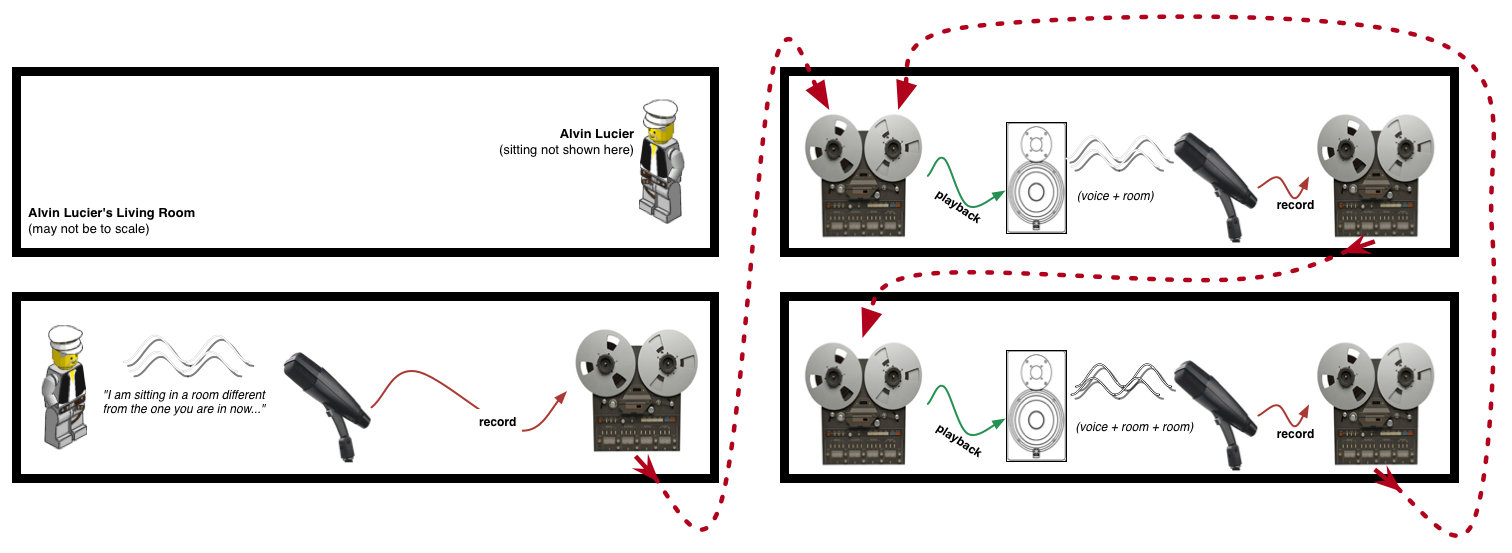
Alvin Lucier
I Am Sitting in a Room
(1969)
Facts:
Created in 1966
By a trained musician
Used readily-available analog technology
Created in the composer’s home
13 minutes
Questions:
1) What are the raw sound materials (not the tools) used?
2) What did you hear that suggested which technologies might be used?
3) What compositional process (not technology) might be used? What did you hear that suggested it?
Again, listen to the audio while considering the facts & questions...
Phasing
Steve Reich
Come Out (1966)
It's Gonna Rain (1965)
Pendulum Music (1968)
Violin Phase (1979)
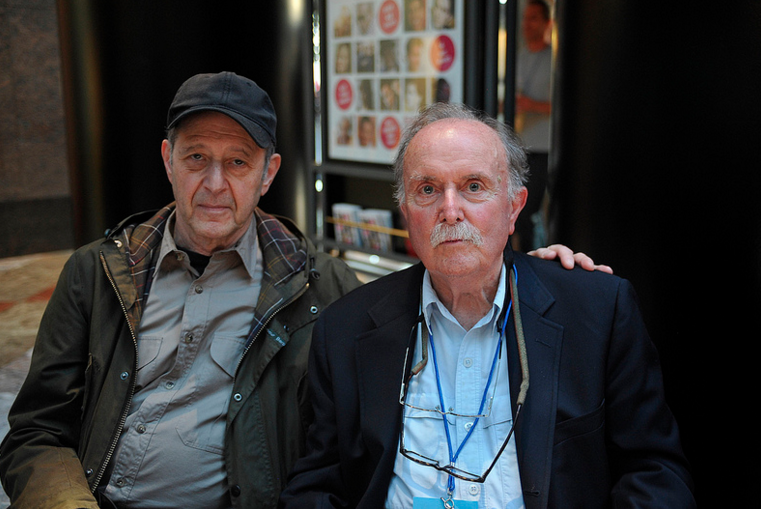
Steve Reich & Alvin Lucier
Steve Reich
Pendulum Music (1968)
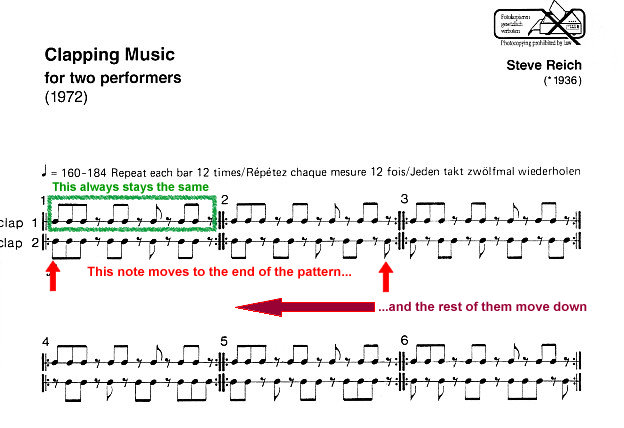
Additive/Subtractive
Philip Glass
Einstein on the Beach (1976)
adding an 1/8th-note, from "Train 1"
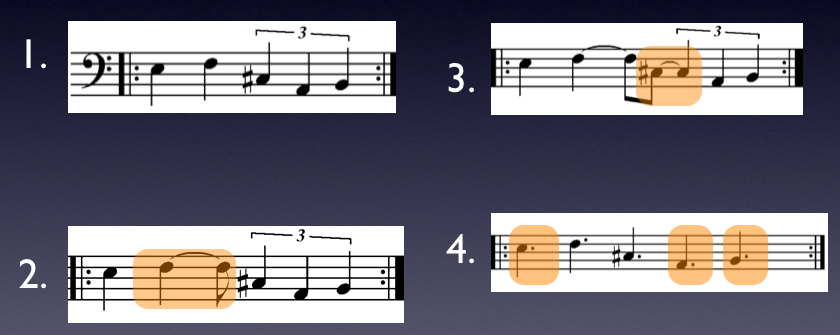
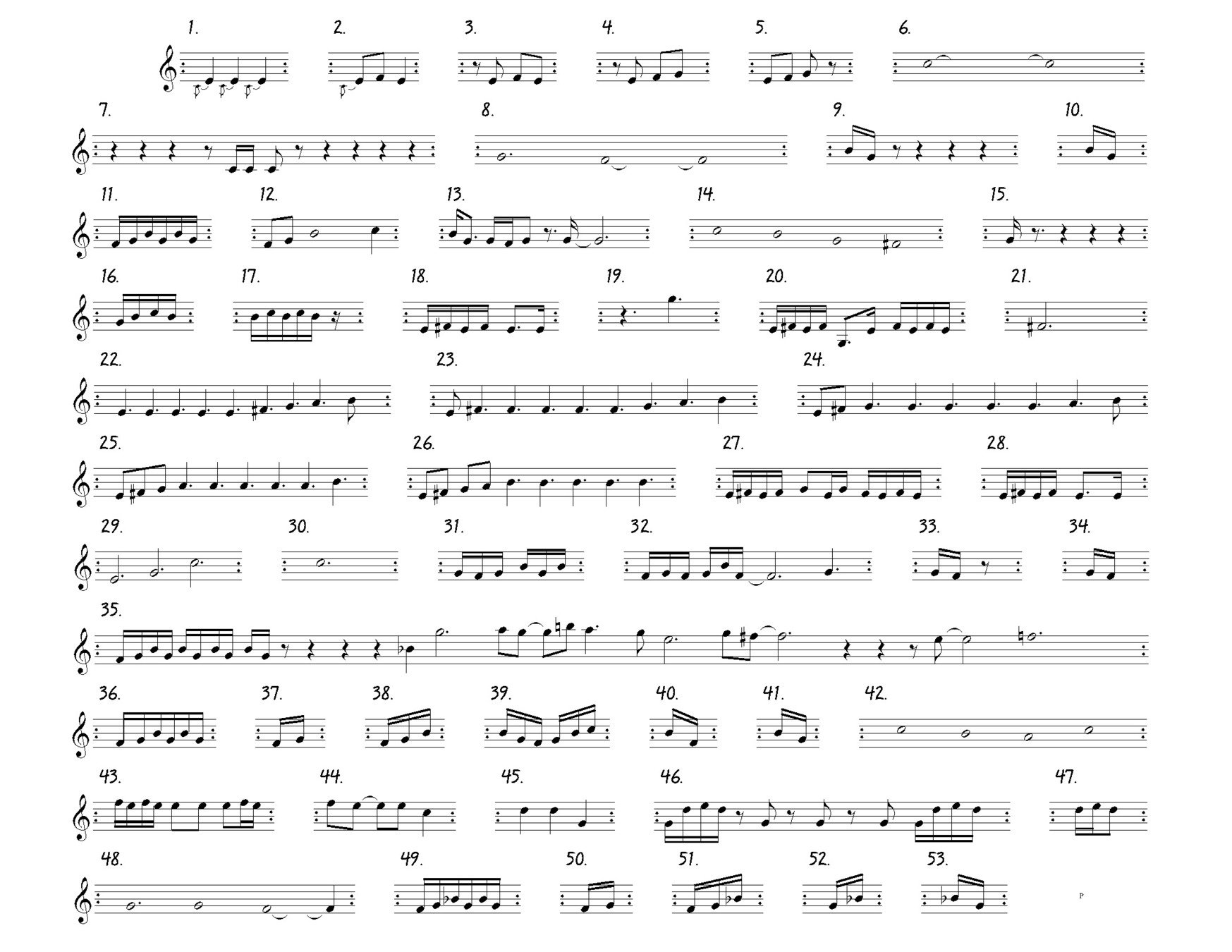
Terry Riley
In C
(1964)
CONCEPTS
Working Backwards to Minimalism
Go as far as possible using minimal materials
But not necessarily sparse or spare results
Minimalism
- Uses simple musical building-blocks assembled into larger works
-
Process is important and audible
- Strong sense of repetition and pulse
- Desire to connect with broader audiences
Giving Listening its Time...
In Zen they say: If something is boring after two minutes, try it for four. If still boring, try it for eight, sixteen, thirty-two, and so on. Eventually one discovers that it's not boring at all but very interesting.
–John Cage